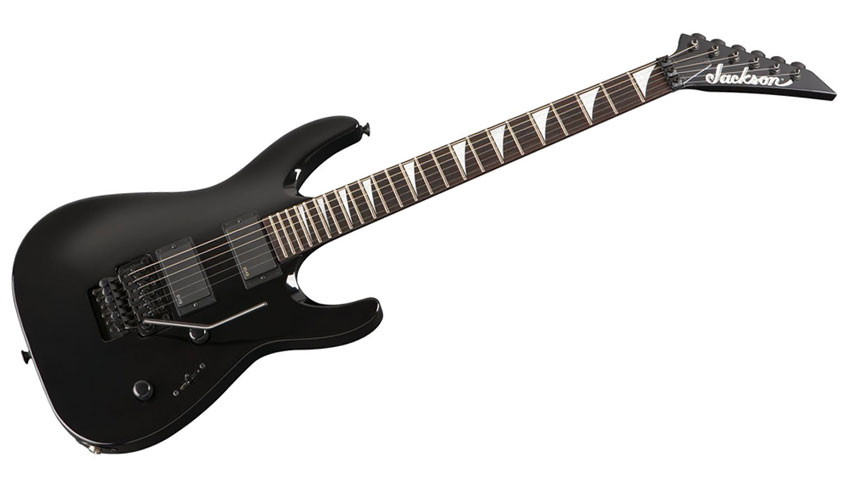MusicRadar Verdict
A very respectable entry-level rocker that - unsurprisingly, given its heritage - is best suited to fans of all things heavy and widdly.
Pros
- +
Well-built. Nice body. Great neck for lead-playing.
Cons
- -
Neck is less suitable for chord work.
MusicRadar's got your back
You might call the HSS pickup configuration the best of all possible worlds, like the old six-beer bar conversation where you construct a dream woman from the best features of Hollywood starlets.
Jackson's Dinky is a familiar shape, and the original JS2 range was entry-level gold, so the release of the "beefed-up" JS23 Dinky is a welcome addition to the wealth of affordable super-Strat options out there.
"The JS23 displays its shred credentials with iconic Jackson flourishes like the shark-fin inlays and angular headstock"
It's certainly got spec on its side. This model throws a widdly two octaves worth of frets onto a maple bolt-neck, and nails down those shred credentials with iconic Jackson flourishes like the shark-fin inlays and angular headstock.
It's easy to forget this is a £238 slugger and start treating it with the reverence you'd give a Soloist from Phil Collen's rack. An Indian cedro body isn't the first thing you'd ask for at the custom shop, but it's light, well constructed, and gives belting access to the greased-lightning neck, whose compound radius is magic for soloing, but not quite so convincing for chord work.
Sounds
Tonally, Jacksons are sometimes criticised for sounding a little 'flat' when clean, but this one is more than competent, with the singles sounding brilliantly nasal and twangy when you dig in, and the humbucker nice and warm for the theoretical chord sequences that you'll never want to play.
With that said, the best voice for us is the fusion of middle and bridge, which nails that tonal halfway-house between thump and twang that you could sit on for half the gig. If you're playing both Hetfield and Hammett in a Metallica tribute band, you can't go wrong with the JS23.
“I have an original 909 – every time I try to use it I feel like I’m ruining it”: House hero Riva Starr on his studio essentials and his love of analogue synths
“A synthesizer that is both easy to use and fun to play whilst maintaining a decent degree of programming depth and flexibility”: PWM Mantis review
“I feel like that song had everything we needed to come back with”: Bring Me The Horizon’s Lee Malia on Shadow Moses, its riff and the secrets behind its tone, and why it was the right anthem at the right time










